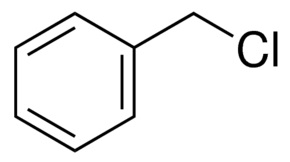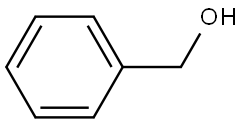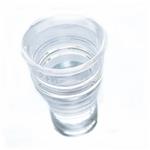
Benzyl chloride
- Product NameBenzyl chloride
- CAS100-44-7
- CBNumberCB1852583
- MFC7H7Cl
- MW126.58
- EINECS202-853-6
- MDL NumberMFCD00000889
- MOL File100-44-7.mol
- MSDS FileSDS
Chemical Properties
| Melting point | -39 °C |
| Boiling point | 179 °C |
| Density | 1.1 g/mL at 25 °C(lit.) |
| vapor density | 4.36 (vs air) |
| vapor pressure | 10.3 mm Hg ( 60 °C) |
| refractive index | n |
| Flash point | 165 °F |
| storage temp. | Store below +30°C. |
| solubility | soluble0.46g/L at 30°C (Decomposes in contact with water) |
| form | Liquid |
| color | Clear colorless to slightly yellow |
| Odor | Pungent, irritating. |
| explosive limit | 1.1-14%(V) |
| Water Solubility | 0.3 g/L (20 ºC) |
| Merck | 14,1129 |
| BRN | 471308 |
| Henry's Law Constant | (x 10-4 atm?m3/mol): 3.57 at 20.00 °C (inert gas stripping, Hovorka and Dohnal, 1997) |
| Exposure limits | TLV-TWA 1 ppm (~5mg/m3) (ACGIH, MSHA, and OSHA); IDLH 10 ppm (NIOSH); carcinogenicity: Animal Limited Evidence, Human Inadequate Evidence (IARC). |
Safety
| Symbol(GHS) |
  
|
|||||||||
| Signal word | Danger | |||||||||
| Hazard statements | H302-H315-H317-H318-H331-H335-H350-H373 | |||||||||
| Precautionary statements | P280-P301+P312-P302+P352-P304+P340+P311-P305+P351+P338-P308+P313 | |||||||||
| Hazard Codes | T,T+ | |||||||||
| Risk Statements | 45-22-23-37/38-41-48/22-43-26-46 | |||||||||
| Safety Statements | 53-45-36/37/39-28-26-36/37 | |||||||||
| RIDADR | UN 1738 6.1/PG 2 | |||||||||
| OEL | Ceiling: 1 ppm (5 mg/m3) [15-minute] | |||||||||
| WGK Germany | 3 | |||||||||
| RTECS | XS8925000 | |||||||||
| F | 8-19 | |||||||||
| Autoignition Temperature | 585 °C | |||||||||
| TSCA | Yes | |||||||||
| HazardClass | 6.1 | |||||||||
| PackingGroup | II | |||||||||
| HS Code | 29039990 | |||||||||
| Hazardous Substances Data | 100-44-7(Hazardous Substances Data) | |||||||||
| Toxicity | LD50 orally in Rabbit: 440 mg/kg | |||||||||
| IDLA | 10 ppm | |||||||||
| NFPA 704: |
|





